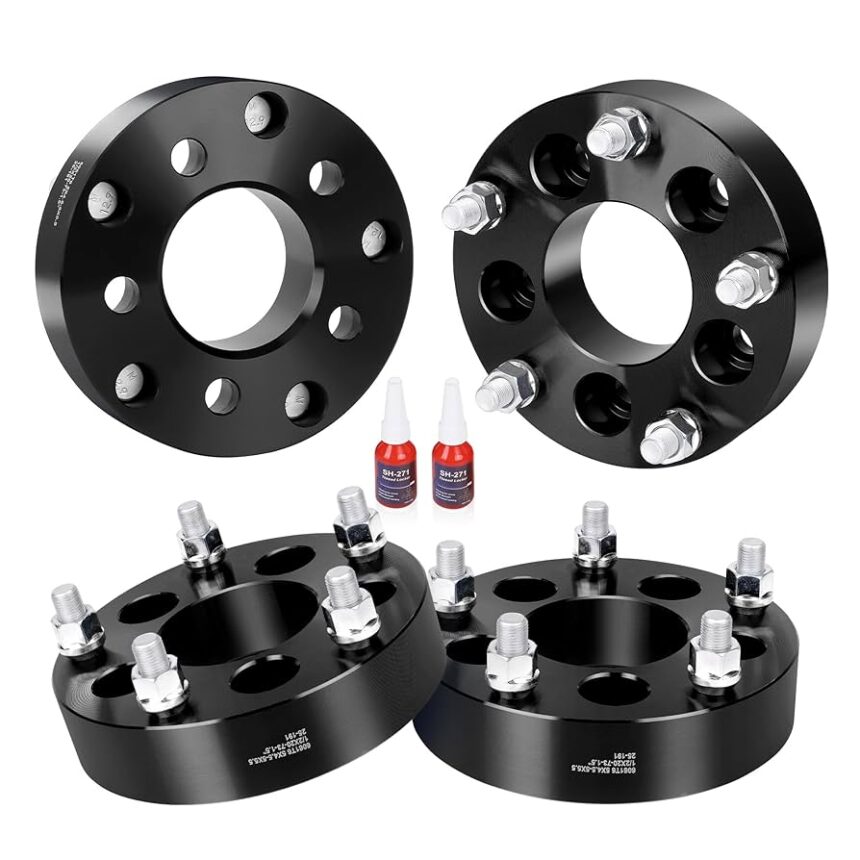When upgrading or replacing wheels on your vehicle, one of the most important things to consider is the bolt pattern. It determines whether your new wheels will fit your vehicle safely and securely. If you’re dealing with a 5×5 bolt pattern, understanding its meaning, compatibility, and how to measure it is crucial to avoid potential issues. This guide will help you navigate the details of the 5×5 bolt pattern.
What is a Bolt Pattern?
A bolt pattern refers to the arrangement of bolt holes on the wheel hub, which connects the wheel to the vehicle. Two key components define it:
- The number of bolts or holes on the wheel (for example, 5).
- The bolt circle diameter (BCD) is the distance between the center of one bolt hole and the center of the hole directly opposite (in inches).
For example, in the 5×5 bolt pattern, the 5 refers to five bolts, and the second 5 indicates a bolt circle diameter of 5 inches. This pattern is commonly found on trucks, SUVs, and certain off-road vehicles.
Understanding this pattern is vital because a mismatch in bolt patterns can lead to improper fitment, potentially affecting vehicle performance and safety. Always make sure you know the correct bolt pattern for your vehicle before purchasing new wheels.
Decoding the “5×5” Bolt Pattern
The 5×5 bolt pattern is one of the most popular patterns used, especially for vehicles that require a more robust and durable wheel, such as trucks and off-road vehicles. Here’s how the 5×5 pattern works:
- The first 5 represents the five bolt holes on the wheel.
- The second 5 represents the bolt circle diameter of 5 inches.
Comparing this to other bolt patterns, like 5×4.5 or 6×5.5, the 5×5 pattern is specifically designed to support heavier loads, making it a common choice for vehicles that experience heavy-duty tasks like off-roading or towing.
For more information about how bolt patterns work in general, you can check this Wikipedia page on bolt patterns.
Standard Vehicles with a 5×5 Bolt Pattern
Many vehicles are built with a 5×5 bolt pattern due to the need for more durable and robust wheels. Some of the most common cars that use this pattern include:
- Jeep Wrangler (JK and JL models)
- Chevy Colorado
- GMC Canyon
- Chevrolet Silverado 1500 (early models)
- Toyota 4Runner (older models)
These vehicles are designed for rugged terrains and heavy-duty use, making the 5×5 bolt pattern a reliable option for fitting larger wheels, especially for off-road enthusiasts. The sturdy design helps these vehicles perform efficiently under demanding conditions, like rock crawling, mud driving, or even towing heavy loads.
How to Measure the 5×5 Bolt Pattern
Measuring the 5×5 bolt pattern accurately is crucial to ensure you buy the correct wheels. Here’s a simple step-by-step process:
- Count the Bolts: The 5 in 5×5 indicates there are five bolt holes on your wheel.
- Measure the Bolt Circle Diameter (BCD): Measure the distance from the center of one bolt hole to the center of the bolt hole directly opposite. For the 5×5 pattern, this distance should measure 5 inches.
- Double-Check: Ensure the measurement is accurate. Even a slight difference can result in improper fitment.
Getting the correct measurement is essential to avoid wheel compatibility issues and maintain proper safety standards.
Why the Right Bolt Pattern Matters
Using the correct bolt pattern is essential for both safety and performance. A wheel that doesn’t fit the correct bolt pattern can lead to several issues, including:
- Improper Wheel Fitment: Mismatched bolt patterns will prevent the wheel from fitting onto your vehicle’s hub, potentially leading to serious safety hazards.
- Decreased Vehicle Performance: Even if the wheels fit with a different pattern, they may not perform optimally, which could affect the vehicle’s handling, alignment, and overall stability.
- Safety Risks: If the wheels don’t securely attach to the hub, they may come loose while driving, which could lead to serious accidents.
How to Choose Wheels with the Correct 5×5 Bolt Pattern
When purchasing wheels for a 5×5 bolt pattern, there are several factors to consider beyond just the bolt pattern itself. These include:
- Wheel Size: Ensure the wheel size matches your vehicle’s specifications. Larger wheels may require adjustments to other parts of the car, such as the suspension.
- Offset and Backspacing: These terms refer to the positioning of the wheel relative to the vehicle’s body. It’s essential to choose wheels with the correct offset and backspacing to avoid clearance issues.
- Load Rating: Choose wheels that are rated for the load your vehicle will carry. Off-road vehicles, for example, may require heavier-duty wheels that can withstand harsh conditions.
- Tire Compatibility: Make sure the tires you plan to use with your wheels are compatible with the 5×5 bolt pattern.
If you’re unsure about compatibility or specifications, it’s always best to consult with a professional mechanic or tire specialist.
Aftermarket Wheel Options for the 5×5 Bolt Pattern
For those looking to upgrade their wheels or enhance the appearance of their vehicle, the 5×5 bolt pattern opens up a wide range of aftermarket wheel options. Many trusted brands, such as Pro Comp, Fuel Off-Road, and American Racing, offer wheels designed explicitly for this bolt pattern.
When selecting aftermarket wheels, it’s essential to consider your vehicle’s intended use. Off-road vehicles may need specialized wheels that provide extra durability, while those looking for a performance edge may choose wheels that optimize handling and weight distribution.
It’s also worth noting that a competitor in the aftermarket wheel space, Mickey Thompson Tires, also offers quality options for vehicles with the 5×5 bolt pattern, especially for off-road enthusiasts.
Always choose wheels that align with your driving needs and ensure professionals correctly fit them.
Conclusion
The 5×5 bolt pattern plays a significant role in ensuring your vehicle’s wheels fit correctly and safely. Whether you’re off-roading or towing heavy loads, understanding this pattern is crucial for vehicle performance and safety. Always measure the bolt circle diameter accurately, select compatible wheels, and consult professionals when needed. If you’re in the market for new wheels, take the time to research and make an informed decision. Proper wheel fitment will enhance your driving experience, performance, and safety on the road.





